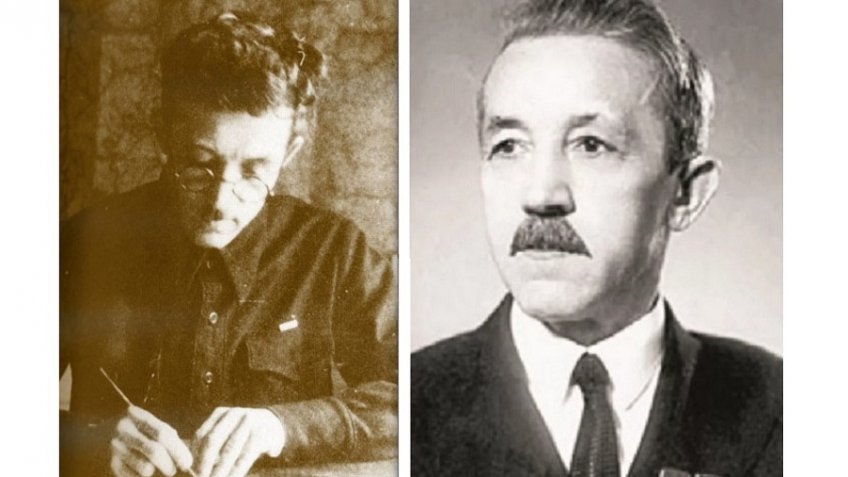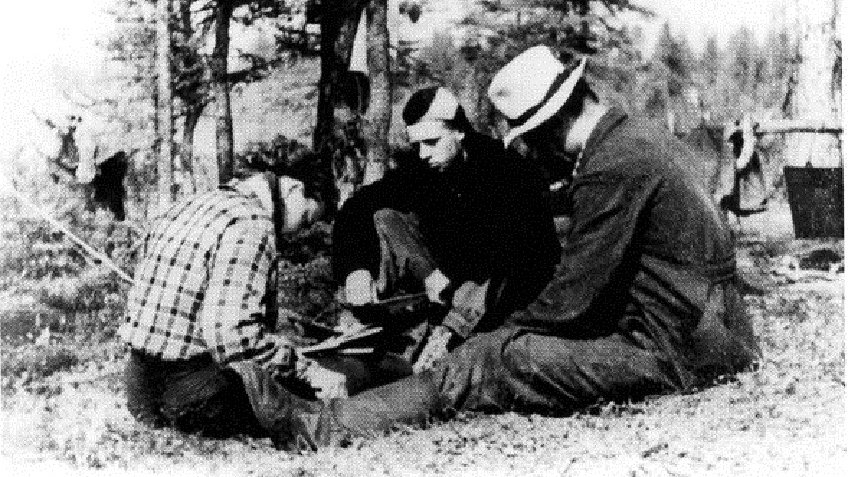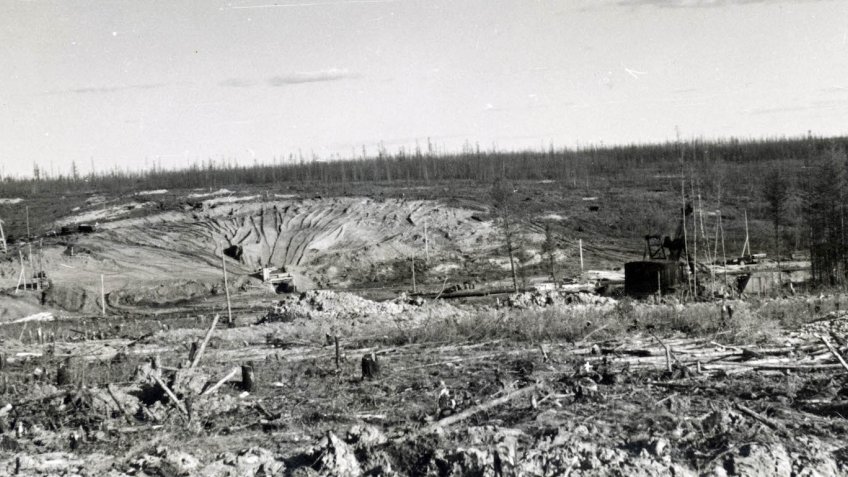In the summer of 1955, three geologists of the Amakinskaya expedition sent a secret radiogram to their superiors: "We smoked a peace pipe, the tobacco is excellent. Avdeyenko, Elagina, Khabardin". According to the official version, they are considered the discoverers of one of the largest primary diamond deposits in Russia... But there are still disputes about the authorship of the discovery.
In the mid-20th century, Russia experienced an acute shortage of industrial diamonds. The course of "catching up and surpassing the capitalist countries in terms of production per capita" required technological breakthroughs, which was not possible without finding a super-hard mineral. Diamond tools were needed by the machine-building, aviation, automobile, machine-tool, radio, and electrical industries.
Foreign countries refused to sell stones to the Soviet Union, and as a substitute, it was necessary to use carbide tools, which made the production much more expensive. The task of finding country’s deposits became paramount.
The "brain center" of prospecting
Initially, exploration work was deployed in the Middle Urals. They were headed by Alexander Burov, a graduate and professor of the Leningrad Mining Institute - the chief geologist of the 3rd Department of the Ministry of Geology of the USSR, which was responsible for all diamond prospecting in the country. Soon the first commercial reserves of crystals were discovered, but they could not provide the state with sufficient raw materials.
The work proposed by Alexander Burov and carried out under his leadership to compare the geological structure of diamond-rich areas in South Africa with similar territories helped to identify promising Siberian regions. Burov insisted on the suspension of prospecting work in the Urals and on increasing their volume on the Siberian platform. For many years the basins of the Nizhnyaya Tunguska and Viluy rivers were considered unpromising, and only the scientist from Leningrad shrewdly declared them to be exceptional. He sent expeditions there, which resulted in the discovery of the Yakutian diamondiferous province and the widespread introduction of crystals into the industry.
However, the story of discovering the first diamonds in the territory of the Republic of Sakha may be compared with the suspense of Hollywood blockbusters. Take, for example, the fate of geologist Larissa Popugaeva, who in 1953 discovered the first in the USSR kimberlite pipe Zarnitsa, but subsequently was stigmatized.
The story of the Mir pipe discovery is no less fascinating.
What does the "pipe" have to do with it?
First of all, why are the primary diamond deposits called that? Giant cylindrical channels a few hundred meters deep with a cross-section of 0.4-1 kilometer were formed due to explosions in volcanic eruptions. Inside them is the solidified rock kimberlite, which consists of pyrope, carbonates, and other minerals. But most importantly, diamonds. According to experts, about 90% of the reserves of these crystals are concentrated in the kimberlite pipes. They are mined in South Africa, India, and Russia. In particular, about 10 such sites are now being developed in Yakutia.
After Popugaeva's legendary find, multiple exploration parties headed for northeastern Siberia. Throughout the summer of 1954, they searched for other pipes, but to no avail. The Russian scientists already knew that purple pyrope is an indirect sign of the presence of diamonds. Moreover, they had encountered it, but no kimberlite could be found. The approaching winter forced them to postpone the work to the next season.
Rivals’ shenanigans
In the early spring of 1955, geologists from the Amakinskaya Expedition Yekaterina Yelagina, Yuri Khabardin, and Vladimir Avdeenko flew to Yakutia. The main task was to reach the kimberlite body by pyrope. The leaders of the Novy settlement, where the group was to be based, met them with displeasure: they refused to provide them with food, gave them the most "worn-out" equipment, forbade them to use walkie-talkies, and isolated them from their colleagues. Competing explorers, who themselves wanted to become the discoverers, put sticks in the wheels of the newly arrived geologists
To travel to the tributary of the Vilyui, the Irelyakh River, they had to resolve on their own all issues with t transportation, which ended up being reindeer sleds.
Having arrived at the place, the team proceeded to inspect the banks and wash the schlichs. The next day Vladimir Avdeyenko saw a diamond among the caught pyrope and ilmenite. He had no doubts about the find, although he had never encountered crystals before. As mineralogists say, the unique oily luster that distinguishes them is unmistakable, because a real stone cannot be suspected of its authenticity.
The Fox Hole
The next day, the researchers moved their camp to the site of Avdeenko's discovery.
“Soon, with enthusiastic shrieks, they began to find the diamonds, hide them in paper bags, record the finds in a field diary and stow them at the bottom of the field bags. When we saw two large crystals under the flat tiles, the three of us let out a roar similar to the one that comes from a crowded stadium when a puck is successfully thrown!” Catherine Elagina recalled.
For nine full hours in the deep Yakut taiga they stirred up the rubble: they searched while lying on their stomachs, greeting the finds with shouts. Though the diamonds roused enthusiasm, the scientists were haunted by the question: why were the pyroids gone, and why didn't the kimberlite appear? This meant that they were moving farther away from the location of the alleged pipe.
And suddenly, on the slope of the ravine, the members of the expedition saw a tall larch tree whose roots were exposed by a landslide. Their eyes were also opened to a deep burrow that a fox had dug under the tree. The blue rock was scattered all around, and in the middle of these ruins, a red pyrope burned in the evening sun. And so it was almost by chance that on the third day after landing in the taiga the group of prospectors discovered the legendary "blue earth," as geologists called kimberlite. And following it - one of the largest primary diamond deposits in the USSR.
What followed was that encrypted telegram, which had nothing to do with tobacco, the intensification of work in Yakutia, and the establishment of the Russian diamond mining industry.
An unrecognized discoverer
Only Yury Khabardin, under whose direction the fieldwork was formally conducted, was presented with a state award from the entire Amakinskaya geological prospecting party. He was awarded the Lenin Prize. Much later, Elena Yelagina was awarded an honorary diploma "Discoverer of the Field" and the Order of Honor for her services to the state and great contribution to the development of the mineral resource base. The role in the discovery of Vladimir Avdeyenko, who was the first to find the diamond, was not given importance at all.
In 2016, unexpectedly, this story had a scandalous continuation - the annual "direct line" with Vladimir Putin received a video letter in which Alexei Gerasimov, a native of the Sakha Republic, asked the head of state to recognize his father as the discoverer of the Yakut diamonds.
It turned out that apart from three geologists, a reindeer herder and two workers worked in the search team. Only Elagina mentions their participation in the expedition in passing in her book of memories. At the same time, unofficial sources together with the Yakut media attribute the legendary find to one of them - Grigory Gerasimov. They say Grigory decided to show that the locals are not afraid of the cold, and dove into Irelyakh.
“He dived out with a handful of pebbles, gravel, and two very transparent crystals. Khabardin, hearing our raptures, came out of the tent and, looking at the crystals, immediately determined that they were diamonds,” the worker told the Yakutia newspaper.
Who picked up the diamond first is probably not that important. Much more important in the long run is the result. For 44 years, the Mir open-pit mine was used for mining (from 1957 to 2001), and from 2009 to August 2017, the underground mine of the same name was developed. A few hundred meters from the kimberlite pipe the town of Mirny was born, which turned into the diamond capital of Russia. Today, the headquarters of Alrosa, the world’s leading diamond mining company, and Yakutniproalmaz, Russia’'s main diamond institute engaged in the study and design of industrial mining of crystals, are located here.



